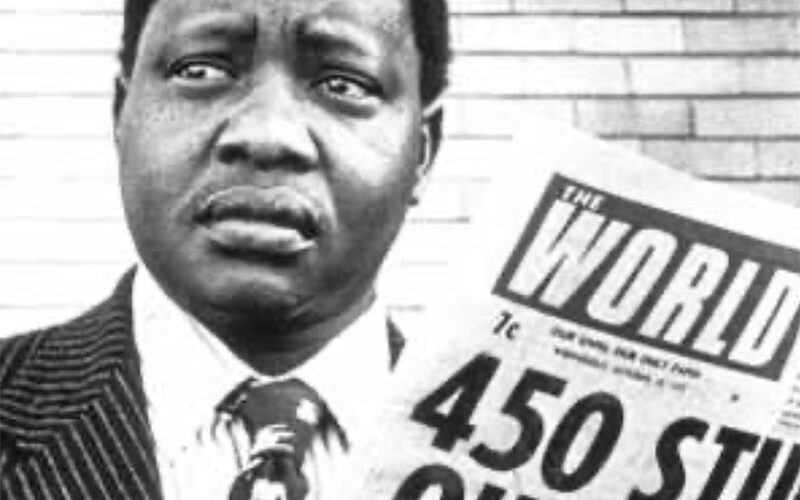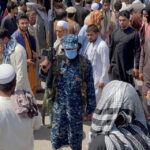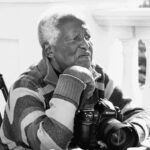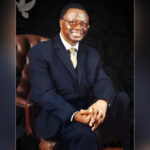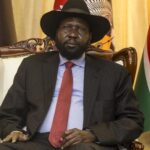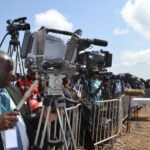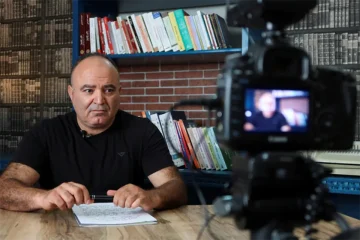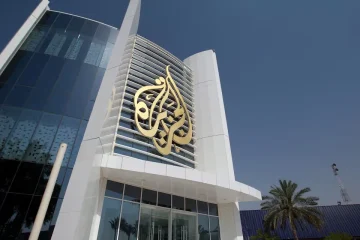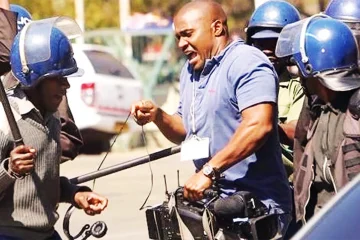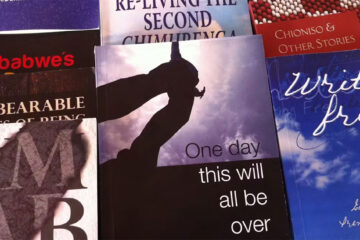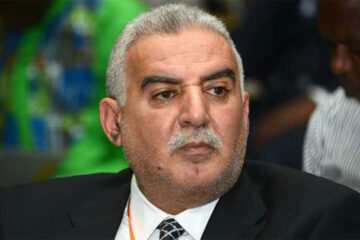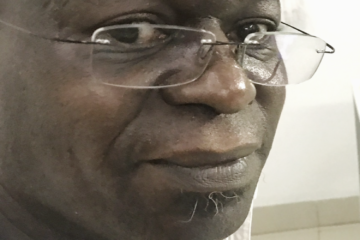PIPPA GREEN
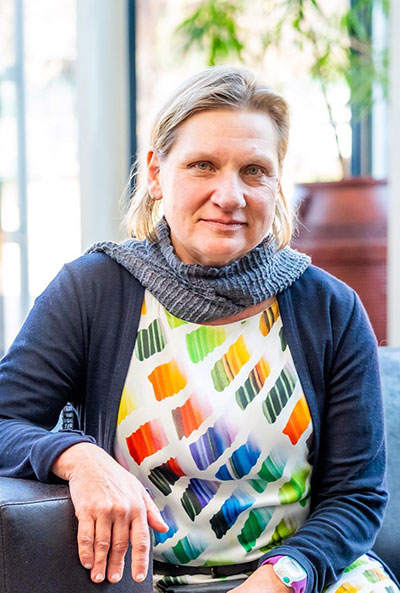
SOME four decades ago, the apartheid government closed down a major black daily, The World, and detained its editor, Percy Qoboza, as well as his deputy Aggrey Klaaste. Government bans the World – read one newspaper poster only slightly ironically
That day, October 19th, 1977, became aptly known as “Black Wednesday”.
A number of other black journalists were detained at the same time – among them Joe Thloloe, who is the former director of the Press Council.
Thloloe was already in jail under Section 6 of the Terrorism Act – which allowed for indefinite detention. So he was dismissed by the then publisher of Drum, where he worked.
In an interview with Glenda Daniels published in the Daily Maverick last year, Thloloe recalled:
“Qoboza sent me a note to say as soon as I got out I should go straight to him because he had a job for me. So, on 1 February 1977, I joined The World, this time as the features writer. On the 1st of March, I was again detained under section 6. The beautiful thing about Percy is that when we were detained he insisted that the Argus [Printing and Publishing Company], owners of The World, carry on paying our salaries. He insisted we were innocent until we were proved guilty in a court of law.”
This was clearly the type of man Percy Qoboza was.
Of course the crackdown on the media did not happen in isolation. Nineteen anti-apartheid organisations were banned as well.
Steve Biko had just been murdered by police while in detention. The crackdown on the media was about much more than an attack on the media alone, as historian Malesela Lebelo pointed out in City Press.
It was the beginning of a period of severe repression against opponents of apartheid which ended in the late 80s with successive States of Emergency. The political situation profoundly affected the media. By the mid to late 80s, journalists were prohibited even from covering what were defined as “unrest” situations; we were at risk of being beaten or arrested for even just carrying a notebook or camera.
In the 1970s, soon after the crackdown on the black media, the government of then prime minister John Vorster threatened that newspapers had to get their own house in order as he put it or he would impose even more stringent measures of control.
In this environment, it was a small miracle that some journalists stood firm against what had become outright repression – of both political opposition and of news about it.
Some of these tales were recounted in the special media hearings convened by the Truth and Reconciliation Commission in the late 90s. So for instance, Max du Preez, the founding editor of the alternative anti-apartheid Afrikaans newspaper Vrye Weekblad told the TRC about Dirk Coetzee, who had been part of the police death squad based at Vlakplaas and was prepared to spill the beans. Coetzee had approached mainstream newspapers to tell them the horrendous stories of extra-judicial police killings, but they dismissed him. In fact the crime reporter of The Star, Craig Kotze, wrote a story calling him a psychopath. Kotze, as it later turned out, was a security police spy.
The handful of alternative newspapers – Vrye Weekblad, the Weekly Mail and the New Nation run by Zwelakhe Sisulu – broke various stories about the state violence of the late apartheid era: about Vlakplaas, about the police supplying arms to what was then Inkatha, and about the letter bombs sent to various political opponents that killed or injured them.
It was not that the information was not available to the mainstream media, The SABC in fact, as early as 1987, had interviewed askaris and operatives from Vlakplaas replete with their balaclavas over their faces, according to testimony before the TRC. When the human rights lawyer, Bheki Mlangeni was blown up by a letter bomb – initially intended for Coetzee it seemed, Vrye Weekblad published a sworn affidavit from a Vlakplaas agent blaming Eugene de Kock for the murder. Why did the other newspapers not carry that story?
As du Preez told the Commission: “..if the mainstream newspapers and the SABC had reflected and followed up on all these confessions and revelations … every single one subsequently proved to have been true.. the Government would have been forced to .. put a stop to the torture, the assassinations and the dirty tricks. It would have saved many, many lives.”
This is why journalism mattered then; and why it matters now. We may not face anything like the same level of repression, the same violence, but we face other severe threats to the fabric of our democracy.
Corruption is one. It deliberately syphons money and resources paid for by taxpayers and intended to benefit the poor in our deeply unequal society and redistributes it to a politically connected elite class.
The work of the Daily Maverick-convened team that included News24 and the investigative news agency Amabhungane exposing the extent of state capture through what is now known as the Gupta leaks is one example of how journalism can hold those in power to account and how it can protect the fabric of democracy.
But as praiseworthy as that work has been, journalism today faces other major threats. Some are economic. In SA for instance, circulations of print media, and with it advertising revenue, traditionally the financial lifeblood of newspapers, has plummeted. The current pandemic and the lockdown have accelerated the economic decline. Glenda Daniels from the Wits Journalism School has estimated that in the past decade, over half the journalism workforce have lost their jobs. It’s an industry in crisis, she said recently, and there is no solution on the horizon.
Major media houses such as Media24 and Caxton have begun an effective exit from print and are transitioning to digital; several magazine titles have been closed.
This is part of a long structural decline of the print media but the lockdown has accelerated it. It is what Prof Tawana Kupe in an article in the Pretoria News today described as a “perfect storm.”
Underlying the threats to the financial structure of the print media is the rise of social media and with it the instantaneous, quick, and often false news that gets spread on it. Proper journalism has to be about accountability. It has to be about verification and about a respect for truth.
In their seminal book, The Elements of Journalism, Bill Kovach and Tim Rosenstiel, simply and eloquently spell out ten key elements that distinguish journalism from other forms of communication. Among these are :
- Journalism’s first obligation is to the truth
- Its first loyalty is to citizens
- Its essence is a discipline of verification
- Its practitioners must maintain an independence from those they cover; and
- It must serve as an independent monitor of power.
The problem with social media is that obligation to the truth and the discipline of verification frequently comes second to clickbait, rumour and outright propaganda.
In South Africa we experienced a deliberate social media campaign as a pushback to the exposes on the Guptas and state capture, run by a PR company based in London to redirect attention to what it called White Monopoly Capital.
Across the world, we have seen similar campaigns by the largest purveyors of both information and disinformation in the history of humankind – social media platforms.
In a fascinating article in the NY Times this weekend on the First Amendment – America’s rough equivalent to Section 16 of our Constitution which guarantees freedom of expression (with some limitations) – the writer Emily Bazelon points out that while freedom of speech was founded in an environment where constitutionalists (and perhaps idealists) believed that good ideas would triumph in an open marketplace of expression, today this is not necessarily the case.
In the US, social media platforms are used by right-wing news organisations to deliberately spread disinformation. One, Sinclair, ran an online interview earlier this year claiming that Anthony Fauci head of the federal Centre for Disease Control had manufactured the coronavirus. Breitbart, another right-wing outfit, posted a video – after US president Trump had claimed that hydroxychloroquine was a cure for Covid-19 – apparently endorsing this. It was viewed 20 million times before Facebook took it down. So it is no surprise that Dr Fauci now has to have federal guards because of the death threats he has faced, according to a report on CBS’ 60 Minutes.
Lies, as Bazelon, points out, go viral more quickly than the truth. Whereas in traditional news organisations, the old gatekeepers may have been vigilant news editors and subs, the new gatekeepers are now Facebook, Twitter and Google.
False messages forwarded on What’s App and Facebook have spurred ethnic violence and hatred towards minorities in India, Myanmar, Sir Lanka and Bangladesh, writes Bazelon. We know too they have interfered with the electoral process in various parts of the world.
Maria Ressa, the Filipino editor who was recently arrested and charged with eight counts of criminal defamation for a story – as she points out – that she neither wrote, edited nor supervised – gave an illuminating interview to the M&Gs Athandiwe Saba recently, some of which was screened at the recent Sikuvile awards. Around the world, she says, our information eco-system has been turned upside down by the new technology.
She also faces the problem of an authoritarian government who has charged her with “cyber-libel”, a case she says which is meant to bankrupt her news organisation.
She warns that the gatekeepers of news are no longer traditional news organisations: the world’s largest distributor of news is Facebook.
And there is no easy way to distinguish between facts and lies.
How can democracy work, she asks, if we don’t have facts?
Added to this assault on facts, is the power of talk radio – although it is not strictly news, it is nonetheless very influential. In the United States, some 15 million listeners tune into talk radio stations every day – the vast majority of which are extremely conservative. Many have pushed the agenda of the Trump administration; they have spread Covid denialism.
Paul Matzko, the author of a book called “The Radio Right’, writes about their disproportionate influence. For instance, one of the most famous talk-show hosts, Rush Limbaugh, recently honoured by Trump, pushed for what he called the “Limbaugh laws’ on immigration, requiring immigrants to speak English and barring them access to government services among other things. Matzko argues this has played a big part “in steering Republicans toward the virulent anti-immigration stance of Mr. Trump.”
In South Africa, radio is still the biggest medium of news in the country. Some 38 million people get their news principally from radio. But talk shows, rather than news and current affairs, abound. This is not to say that we have anything like the virulence on our airwaves equivalent to the United States. But by definition talk shows depend on self-selected callers to provide the content. Although some of the presenters have been or are good journalists, most do not operate in a milieu where – to cite Kovach and Rosenstiel – the discipline of verification plays a major role.
This is because big broadcasting companies – including even the public broadcaster which has stripped its shows of news and current affairs and replaced it with talk shows – have disinvested in news and redirected resources to a handful of presenters. Sometimes they interview interesting analysts and newsmakers, but much of the content is call-ins.
The public is deprived of in-depth news from courts, commissions, or far-flung rural areas, where 40% of our population still live. We see with the explosion of emotions in Senekal how we have missed the context on that sort of reporting. The newsrooms that service the bulletins operate on tight budgets and there are scant resources for reporting.
We also live in an age where those who wield power or have hidden agendas can and have influenced the media to bend the truth.
In Anton Harber’s excellent book, So, for the Record, that examines both the best and worst of journalism in the past decade, he shows how its credibility has been undermined by relying on sources that turn out to have powerful political agendas.
For instance, one of the main sources for the stories about the so-called police death squads and the blame cast on the then KZN head of the hawks, General Johan Booysen was in fact Thoshan Panday, a man whom he was investigating for fraud and corruption.
Panday, all these years later has recently been arrested in relation to those very charges that Booysen was investigating.
The now infamous Rogue Unit stories reported on how senior SARS officials ( as well as the then commissioner Pravin Gordhan) had, among other things, illegally set up a unit to spy on people, tapped then president Zuma’s phone and even established a brothel.
This series of stories resulted not only in the men’s lives and careers being put in jeopardy, but effectively advanced the project to “capture” SARS. One of the sources relied on was an interim KPMG report.
This case came before my predecessor, then Ombud Johan Retief, and a panel for adjudication.
When highly contested stories are based on anonymous sources, the Ombud usually asks for those sources – in confidence – to check whether, in terms of the Press Code, the newspapers had reasonable grounds to believe that their stories were truthful and accurate.
Mostly, newspapers comply with this request.
In this case they didn’t. The reporters refused to divulge their sources and refused even to hand the Ombud and his panel of adjudicators a copy of the contested KMPG report that formed an important basis for their story.
Again, the reasons for this became clear later. The KPMG report – an interim not a final report in any event – was distributed to only eight people and all the copies were watermarked. As Harber reveals, the copy that the reporter relied on belonged to Tom Moyane, the SARS commissioner appointed by Jacob Zuma.
So it was clear that there was an agenda at play. The reporters did not even allow the subjects of the adverse coverage the opportunity to look at the report which contained serious allegations against them.
The Ombud and his panel upheld all three complaints – by Johan van Loggerenberg, Ivan Pillay and Pravin Gordhan – and ordered the Sunday Times to publish a front page apology and to retract the stories.
But it would take several more years before the Sunday Times itself – under a new editor, Bongani Siqoko, faced as Harber writes “the ghosts of the SARS story.”
We know now the high costs of the state capture project. We know the dire state of the economy, and about the rising poverty made worse by the pandemic and lockdown.
Facts matter. As Maria Ressa says they matter for democracy.
As much as those brave journalists of the apartheid years – Percy Qoboza, Joe Thloloe, and their colleagues, were committed to reporting the dire consequences of the apartheid policy in the aftermath of the Soweto uprising, today’s generation have to be as committed to truth and verification in our work.
As much as we value freedom of expression, credible news outlets also have to be accountable for what they report.
Since the end of apartheid – and even to some extent before – news organisations have resisted government calls for tribunals to police the media and the genuine mistakes that are inevitably made in the course of reporting.
This is why – in 2013, as a result of a commission on press freedom chaired by Judge Pius Langa, the Press Council, comprising representatives of the public and the media, was set up. Its role is to resolve and adjudicate complaints against the media in terms of the Press Code. The Press Council currently has just over 500 subscriber members; sadly the largest English-speaking group in the country, Independent Media, withdrew from the Council four years ago and established its own internal Ombud.
Nonetheless, members of the public still rely heavily on the Council: we receive about 500 complaints a year, about one quarter of which go for adjudication. The rate of compliance is very high – and various checks and balances are built into the system such as an Appeals panel chaired by Judge Bernard Ngoepe.
This self-regulatory system is one way of establishing credibility and accountability in the media.
Accountability is key.
Next time you read a dodgy post on social media that postulates as news, ask yourself whether its authors subscribe to the Press Code or would be willing to be held accountable in terms of it.
As Maria Ressa puts it, we must keep telling stories that matter. We must focus on the key issues of our age- climate change, rising authoritarianism, corruption, immigration, and economic crises – and tell these stories with accuracy and – unlike so much of social media – with empathy.
If we do this, we will be upholding the proud legacy that Percy Qoboza and others have left us.
- Pippa Green is the Press Ombud in South Africa and delivered the Percy Qoboza lecture to mark the 43rd anniversary of Black Wednesday – the day on which the apartheid government banned newspapers and 18 political organisations.

